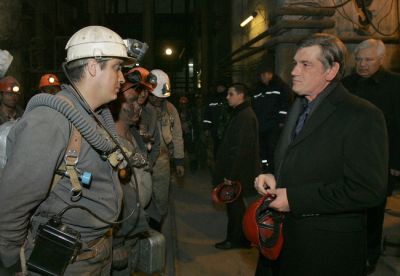Caught Between Two Worlds – Ukraine’s Defense Industry
Defense Establishment Reform
Serious efforts to “westernize†Ukraine’s defense industry depend upon the ability of the country’s political leadership to institute badly-needed overall defense establishment reforms. These include much-needed revision in structure, decision-making, transparency and oversight of Ukraine’s defense establishment. For example, many Ukrainian defense agencies and organizations still follow a Soviet-era “stove pipe†method of making crucial decisions and gaining resource allocation. This abets corruption, “back door†deals, kick backs and cronyism – all characteristic of the Soviet era legacy. A desperately-needed reform would put in place more transparent procedures similar to the “interagency process†used in the U. S. government. This system requires all affected departments to be involved in decision-making and helps to ensure that a properly coordinated outcome is achieved, increasing the chances that any final decision reflects the best interests of the country as a whole (not the narrow, personally-aggrandizing outcomes that too-often happen in Ukraine’s defense establishment).
{default}Much of this needed defense establishment reform is laid out in the country’s NATO Membership Action Plan, a roadmap to eventual NATO membership (albeit when, or even if, Ukraine will eventually become a NATO member remains uncertain – clearly, membership will not be offered before the 2009 elections in Ukraine). Meaningful defense establishment reform must begin with an overall willingness by political and military leaders to realistically assess Ukraine’s actual defense requirements, a process that encompasses the broader areas of foreign policy and the country’s overall economy, and which is significantly influenced by domestic public opinion.

President of the Ukraine, Viktor Yushchenko speaks with miners during a visit to the Donetsk region in November 2007.
Lingering Legacy of Corruption
A serious obstacle to defense reform (as well as political reform) is the legacy of corruption and cronyism left over from the repressive Soviet system. Transparency International’s annual Corruption Perception Index, a measure of how a country’s population views the nation’s level of corruption, still ranks Ukraine near the bottom of the 145 countries it surveys. Ukraine ranks a lowly 128 (number 145, i.e. the most corrupt, is Haiti). Ukraine is in a tier with Kazakhstan, Kyrgyzstan, Niger, Bolivia, Guatemala, and, of all places, Sudan! Although Ukraine ranks slightly above the other former Soviet Union (FSU) republics of Georgia, Tajikistan, Turkmenistan, and Azerbaijan (the lowest ranking of FSU), it lags well behind other central and eastern European countries, such as: Hungary (42), Czech Republic (51), Poland (69), Belarus (74) and Russia (96). As a further gauge of how far Ukraine has to go in overcoming this major obstacle to defense reform, other countries’ rankings show: UK (11); Canada (12); Germany (15); the U. S. (19); and France (22). Number 1 (i.e. the least corrupt country) is Finland. The top 5 are: Finland, New Zealand, Denmark, Iceland and Singapore (with Sweden, Switzerland, Norway, Australia and the Netherlands close behind to form the Top 10). China (71) and Iraq (130) are two others in the survey.
Another telling indicator by Transparency International is its Global Corruption Barometer Report. This survey asks respondents to answer whether or not they or their families had paid a bribe in the last year. The total worldwide response (2006) was: Yes=9-percent; and No=91-percent. In Ukraine, the survey results were: Yes=23-percent; and No=77-percent. Other counties in the survey showed the following percentages: U.S.: Yes=2-percent; and No=98-percent; Poland: Yes=5-percent; and No=94-percent; Czech Republic: Yes=17-percent; and No=83-percent; Russia: Yes=8-percent; and No=92-percent.
Elimination of Soviet-style corruption from Ukraine’s defense establishment requires a top-to-bottom reform that begins at the highest levels of government and industry. The short term prospects for this seem problematic, at best.
[continued on next page]

